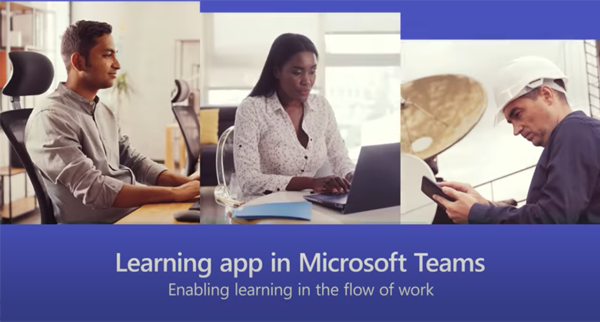Just a few weeks ago, my good friend Jonathan Workman of COG Industries shared with me a video link about Microsoft Teams. Click here to watch the video.
It is fascinating, and in fact, exciting to see that Microsoft Teams (MS Teams) has now incorporated some of the critical principles of workflow learning and microlearning.
I am so enthralled and completely captivated by these two methods of learning that I wrote books about them: Workflow Learning (2019) and 3-Minute E-Learning (2006). I strongly find these methods as the modern-day representation of the much-needed refinements, adjustments, and fine-tuning in learning design.
My impressions
Having used these methods for quite awhile, I have listed down my impressions of MS Teams adopting workflow learning and microlearning in its design. Let’s discuss them in detail.
- MS Teams recognizes and supports the thought process that learning and work are intertwined. When problems and issues confront workers at work, a workflow learning-based design helps facilitate more straightforward access and usage of needed information. They can quickly refer to resources or they can simply go and check with managers and leaders.
- It found a way to separate the process of learning from the world of instructions, which makes for a smooth and coherent design. Instructions are integrated to reference learning tools through Microsoft Learn and LinkedIn Learning (the next generation of Lynda).
- MS Teams referred to the fluidness of workflow learning and the simplicity of microlearning. Learners need not be interrupted on what they do, while they learn every bit of information and apply them to solving work issues.
- When technologies like Microsoft initially started to commoditize, the process and design were arduous and hard to navigate. There were very high-level hurdles for learners when they used the old concepts of learning management systems or other heavy learning platforms. But today, Microsoft has succeeded in making it seamless, lightweight, and natural through MS Teams.
Culture of Collaboration
It is noteworthy to add that a new culture of learning is evolving. Workers are collaborating, exchanging ideas, communicating, and learning at the same time in the right places. We have finally brought the importance of collaboration to the forefront.
The bottom line for me is this: it is easier to commoditize the process when technologies are beginning to keep up with new ideas in learning. Likewise, when they try to mimic and implement some of the significant innovations of thinking (i.e., using workflow learning and microlearning in their software). For me, the most potent implication is, we are learning. We are developing a learning behavior that is focused on work and away from just instruction. Even without being formally taught, people learn through the principles of workflow learning and microlearning.
Doing it, is far more important than being educated on what workflow learning or microlearning is. When you come across Microsoft Teams or any other learning app that allows you to do more, take advantage of it. The journey has been long BUT but we finally made it.
Ray Jimenez, PhD
Vignettes Learning
"Helping Learners Learn Their Way"
Vignettes Learning
"Helping Learners Learn Their Way"


No comments:
Post a Comment
Welcome! Sharing your comments is very valuable learning experience for me and others. Thanks!